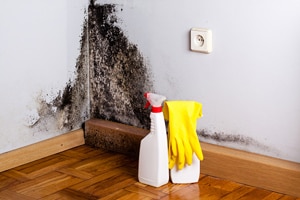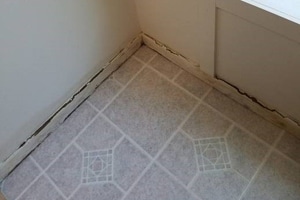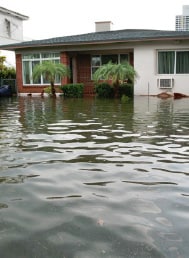Find information about cleaning and disinfecting at home to protect yourself during a coronavirus disease (COVID-19) outbreak.
Mold Clean-Up After Disasters: When to Use Bleach
After a hurricane, flood or other major storm, “green” products can be difficult to find. Bleach and dish detergent might be the only things available in your area. Bleach and dish detergent, common household items, can be used to clean mold in your home after a storm. The steps to take to clean up mold will depend on how much water damage your home suffered.
| Actions | If the inside of your home is covered with debris and thick mud and dirt is on the floor and on the walls you must first remove all of that mud and dirt. Bleach, soap– or any other product—cannot effectively clean up mold if you do not remove the mud and dirt first. | If your home has moderate mold damage, follow these steps to clean up your home: | If the inside of your home has only a little mold and minor water damage you may not need to use bleach. |
|---|---|---|---|
| Remove all moldy, water-damaged items from inside your home. |
• |
• |
• |
| Dig out mud and dirt |
• |
||
| Use a wet vacuum to remove remaining dirt. |
• |
||
| Scrub cleanable surfaces (such as wood, tile, stone) with soapy water and a bristle brush. |
• |
• |
|
| Thoroughly clean all hard surfaces (such as flooring, molding, wood and metal furniture, countertops, and sinks) with water and dish detergent. |
• |
• |
• |
| Use a bleach solution of no more than 1 cup (8 ounces) household laundry bleach per 1 gallon of water to kill mold on surfaces. |
• |
• |
|
| Dry surfaces quickly and thoroughly after cleaning. If you have a fan, air conditioner or dehumidifier that wasn’t affected by flooding use it to help the surfaces dry after you finish cleaning |
• |
• |
• |

Home with major damage

Moderate mold damage

Minor water damage
Important safety reminders:

- Wear personal protective equipment. Wear at least an N-95 respirator, goggles, and protective gloves.
- Open windows or doors when using any cleaning products.
- Never mix bleach with ammonia or any other cleanser.
- Children should not be involved in disaster clean-up.
- Have your home heating, ventilating, and air-conditioning system (HVAC) checked and cleaned by a service professional experienced in mold clean-up before you turn it on. If the system was flooded with water, turning it on will spread mold throughout the house.
View Page In: PDF (English, print-only)
Page last reviewed: July 28, 2020
Content source: National Center for Environmental Health